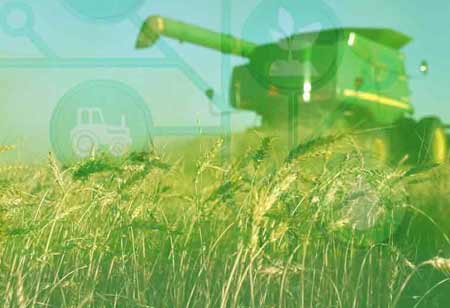Thank you for Subscribing to Agri Business Review Weekly Brief
Blockchain-based agricultural services to drive value.

By
Agri Business Review | Monday, May 16, 2022
Stay ahead of the industry with exclusive feature stories on the top companies, expert insights and the latest news delivered straight to your inbox. Subscribe today.
Blockchain technology allows the user to keep track of all transactions done in real-time. The technology enables highly secure digital transactions and recordkeeping in which the data exchange is recorded— time, date, and nature—when the participants in a blockchain complete a transaction.
The record is saved permanently when the parties have confirmed that the information obtained is accurate and can be made accessible to other participants in the system. Blockchain can be applied to all sorts of transactions and numerous applications in agriculture. The technology reduces inefficiencies in the agricultural industry like food safety, pay, and transaction times.
Food traceability: Consumers are interested in the origins and contents of their food. The demand for organic and farmed products has grown substantially. The producers can sell misbranded products because the consumer can’t trust them and has no natural way of validating the origin. Blockchain can note the invariable information at each step in the food supply chain.
Optimizing the supply chain: Apart from supporting consumers in making informed purchases, improved supply chain transparency could also support farmers. The agricultural sector is complicated; it becomes hard for farmers to know the exact price information and the location where their products are sold. Blockchain technology can correct this problem by recording the transactions in real-time and providing the latest supply and demand information to participants.
Farmers can access such data, allowing them to set their prices and make the best of the quantities of products made accessible in the market. Farmers don’t require mediators and agents to sell their products or any other issues. As the ongoing transaction histories are recorded, blockchain can make it easier for all parties to create a persistent effort.
Better pricing and payment options: The present system takes weeks for farmers to get reasonable prices for their goods and usual payment options, which are pretty expensive. Lately, developers have designed blockchain-based apps that provide low-cost, secure, peer-to-peer fund transfers. Some are even using “smart contracts” that automate the payments as soon as a buyer confirms the delivery of products.
Though blockchain technology is promising, there are some legal problems like governance, contractual certainty, and privacy. Still, the technology certainly has the potential to surmount all the obstacles and show a significant reduction in agricultural transaction costs.





